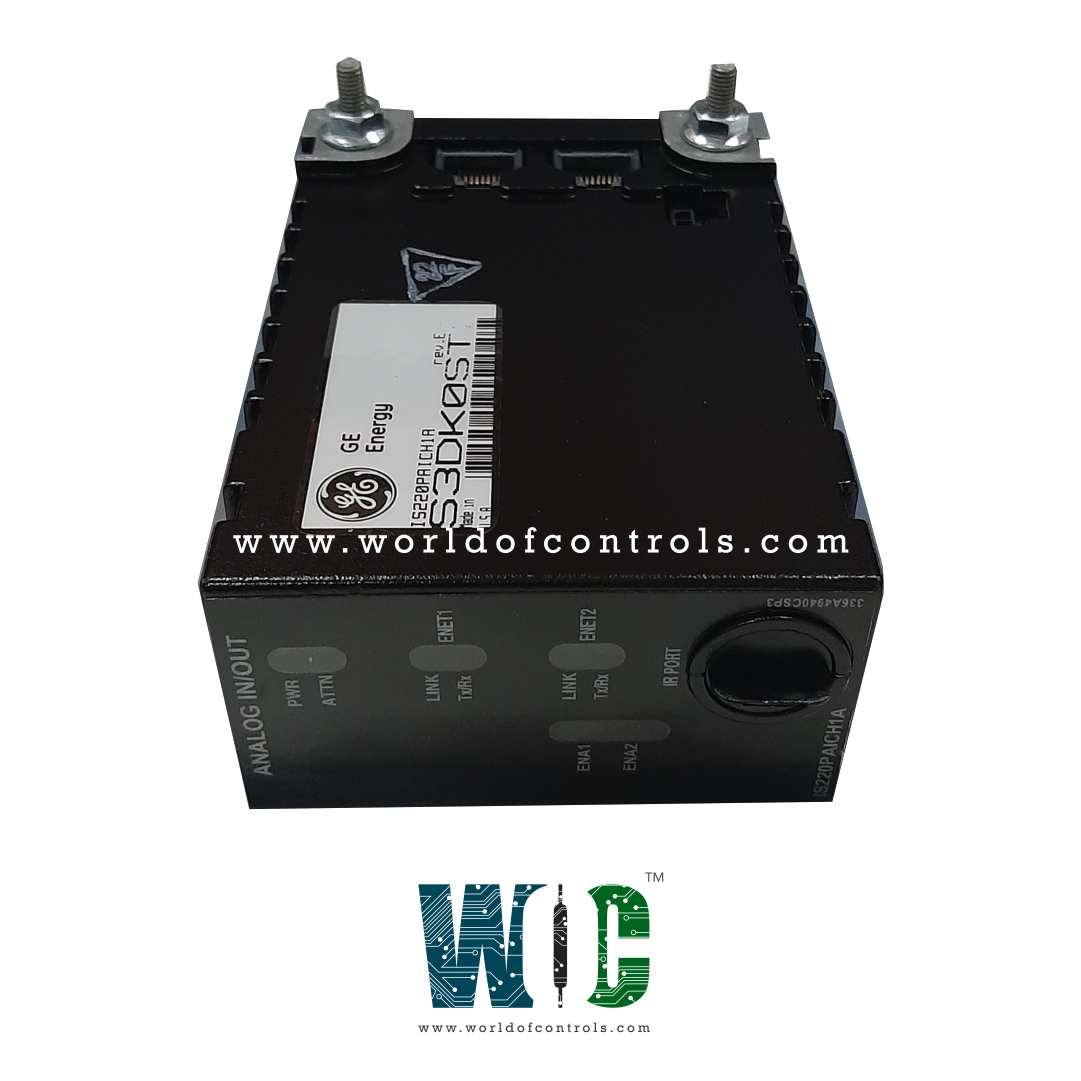
World Of Controls understands the criticality of your requirement and works towards reducing the lead time as much as possible.
IS220PAICH1A, REV E - Analog I/O Terminal Board is available in stock which ships the same day.
IS220PAICH1A, REV E - Analog I/O Terminal Board comes in UNUSED as well as REBUILT condition.
To avail our best deals for IS220PAICH1A, REV E - Analog I/O Terminal Board, contact us and we will get back to you within 24 hours.
SPECIFICATIONS:
Part Number: IS220PAICH1A, REV E
Manufacturer: General Electric
Series: Mark VIe
Product Type: Analog I/O Terminal Board
Operating System: QNX
Power Requirements: +5 V dc, 6 A
Number of input channels: 10
Number of outputs: 2
Trip Solenoid Rating: 125 V dc
Power supply voltage: 28 V dc
Voltage Range: 18 - 32 VDC
Mounting: DIN-rail mounting
Technology: Surface mount
Operating temperature: 40 to 70°C
Size: 33.0 cm high x 17.8 cm
Repair: 3-7 Days
Availability: In Stock
Country of Origin: United States
Manual: GEH-6721D
FUNCTIONAL DESCRIPTION:
IS220PAICH1A, REV E is an Analog I/O Terminal Board manufactured and designed by General Electric as part of the Mark VIe Series used in GE Distributed Gas Turbine Control Systems. The Analog I/O Pack (PAIC) serves as the interface between one or two I/O Ethernet networks and an analog input terminal board. It integrates a BPPX processor board with a dedicated analog acquisition board, tailored for analog input functions. This I/O pack supports up to 10 analog input channels:
Load terminal resistors for current loops are mounted directly on the terminal board, with the voltage across these resistors monitored by the PAIC module. Additionally, the PAIC includes two current output channels (0–20 mA). The enhanced PAICH2 version provides additional hardware for supporting up to 200 mA on the first output channel. Connectivity features:
COMPATIBILITY:
The PAICH1A is compatible with the TBAIH1C analog input terminal board and the STAI board, but does not support the DIN rail-mounted DTAI board. Control mode defines the number of I/O packs in a signal path:
While the PAIC can physically connect to older terminal board revisions such as TBAIH1A and TBAIH1B, it will not deliver optimal analog signal accuracy due to differences in circuit design. The module is specifically engineered for compatibility with the TBAIH1C board (H1C revision), and it will alert users to incompatibility if connected to earlier versions.
OPERATION:
The processor application code in the I/O pack includes all required logic to operate with either one or two Ethernet inputs. When configured with dual Ethernet connections, both network paths remain active simultaneously, providing continuous communication. In the event of a network failure, the I/O pack maintains normal operation using the remaining active connection, and the failure is reported through the functioning network.
This dual-network setup provides enhanced fault tolerance, outperforming traditional hot-backup configurations, where the secondary connection is only activated after a primary failure is detected.
The Ethernet ports on the processor support auto-negotiation, allowing them to adjust dynamically between 10 Mbps and 100 Mbps speeds and switch between half-duplex and full-duplex modes for optimal network performance.
INSTALLATION:
WOC has the largest stock of OEM Replacement Parts for GE Distributed Turbine Control Systems. We can also repair your faulty boards and supply unused and rebuilt boards backed up with a warranty. Our team of experts is available around the clock to support your OEM needs. Our team of experts at WOC is happy to assist you with any of your automation requirements. For pricing and availability on parts and repairs, kindly contact our team by phone or email.
Which terminal boards is the PAICH1A compatible with?
The PAICH1A is compatible with TBAIH1C and STAI analog input terminal boards. It is not compatible with the DIN rail-mounted DTAI board. Using it on earlier terminal board versions like TBAIH1A or TBAIH1B is not recommended due to potential signal accuracy issues.
How is the I/O pack mounted?
The I/O pack mounts directly onto the terminal board via a DC-37 pin connector. It is mechanically secured using threaded studs and a mounting bracket, ensuring a stable connection without stressing the connector.
What is the primary function of the I/O pack?
It provides the electrical interface between the Mark VIe control system’s I/O Ethernet networks and analog signal processing hardware. It handles analog signal acquisition and conditioning for up to 10 analog input channels and 2 analog output channels via integrated acquisition and processor boards (BPPX).